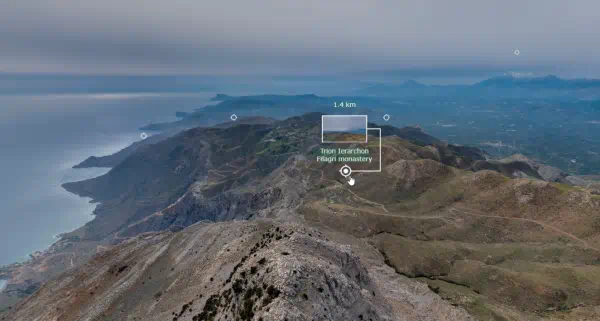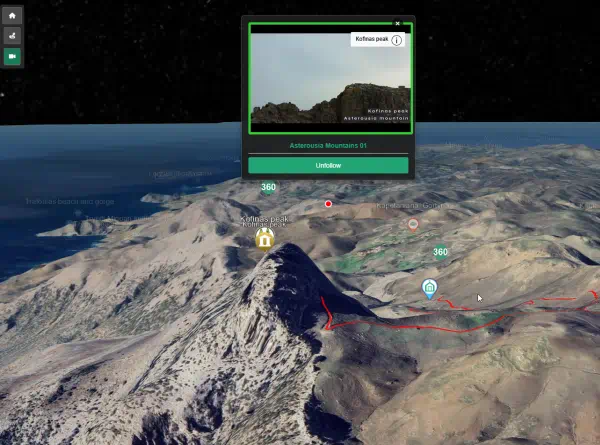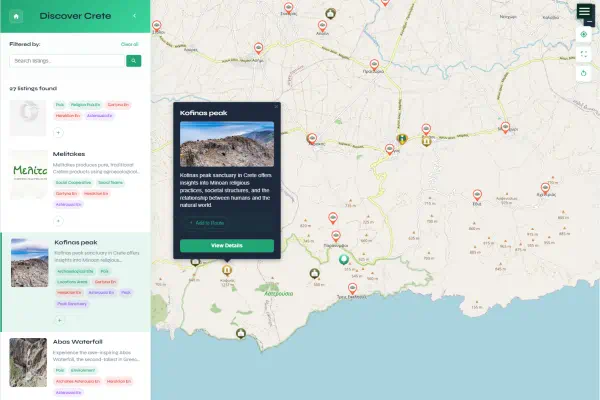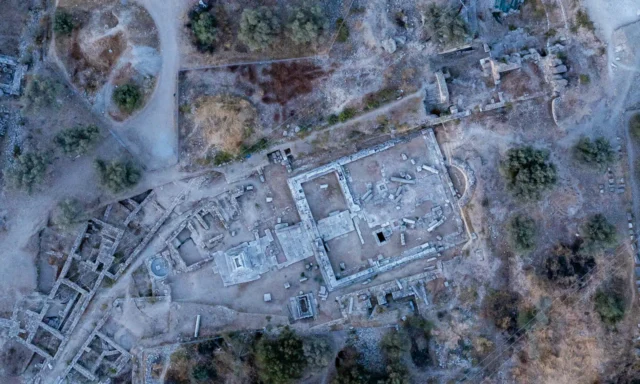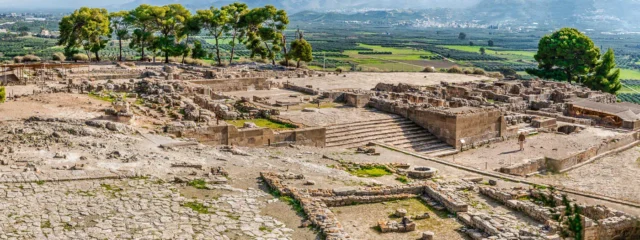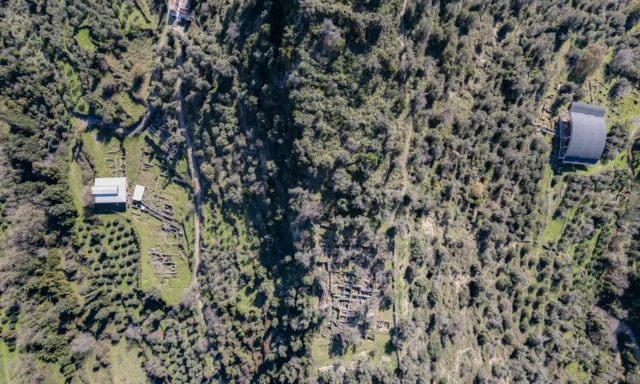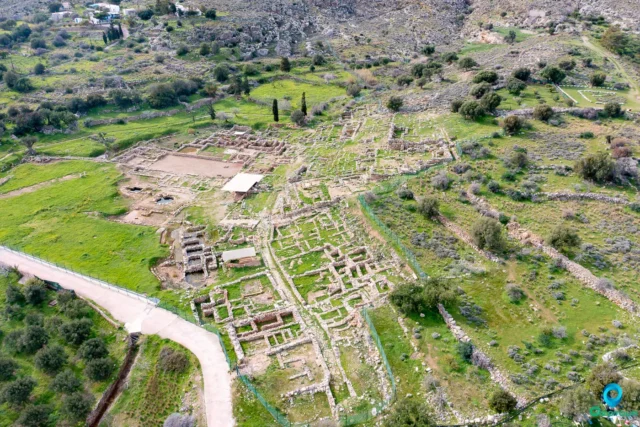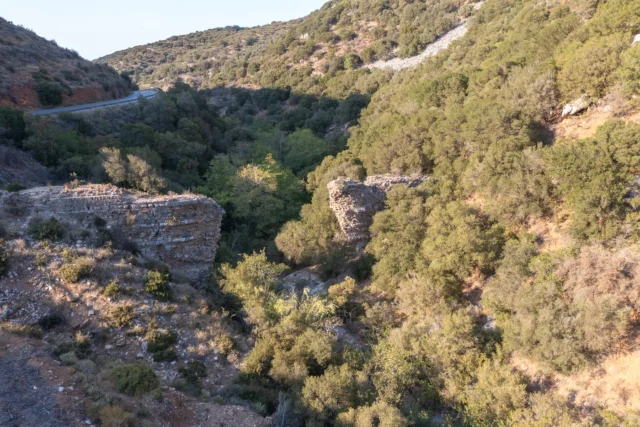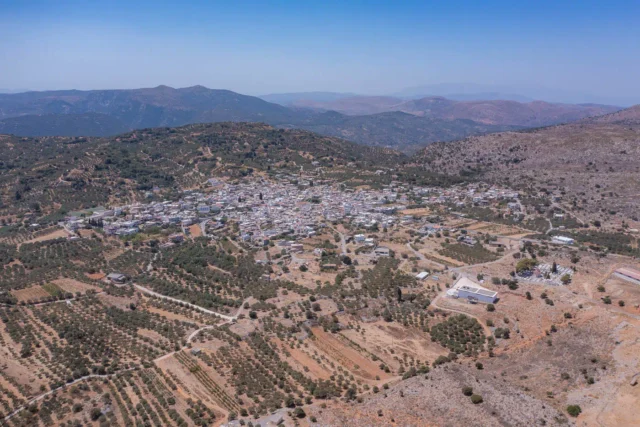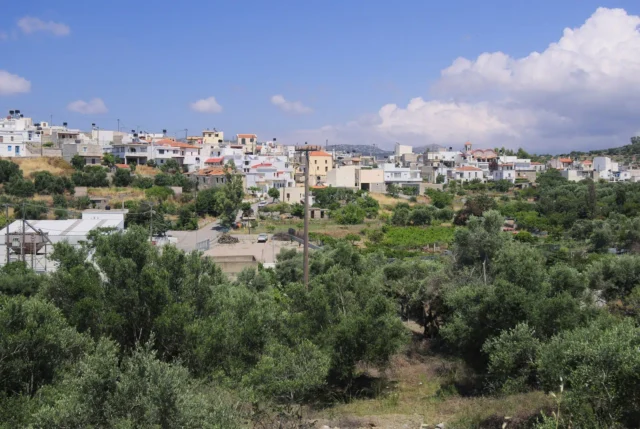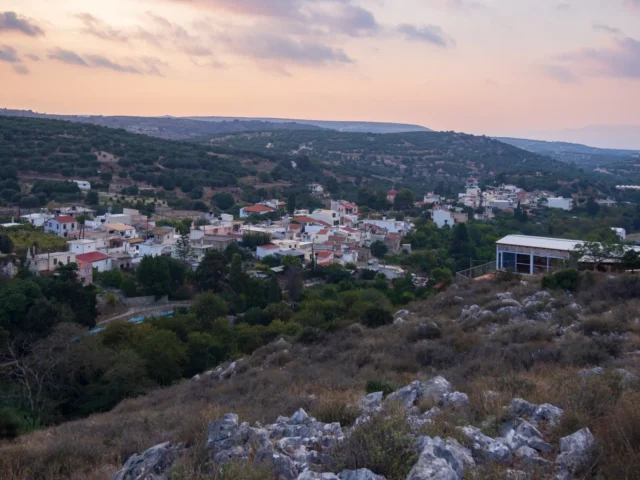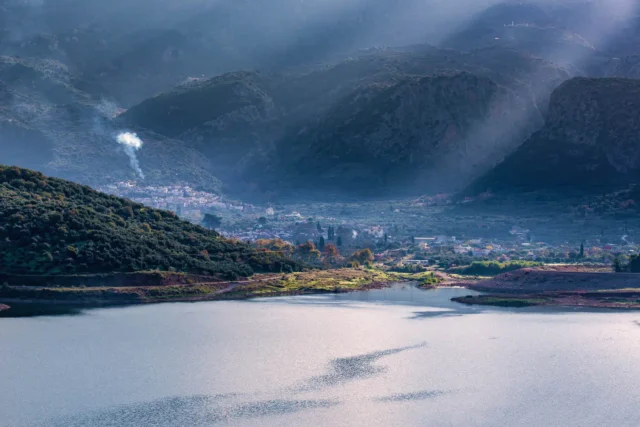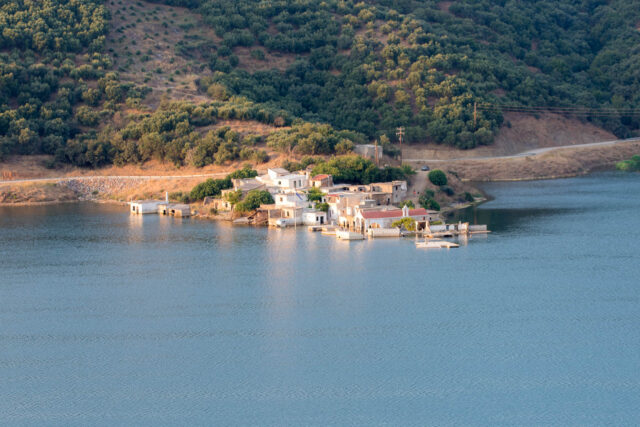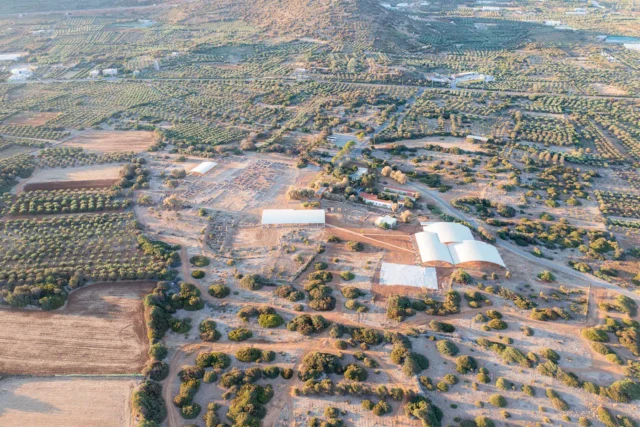Limenas Chersonissou (Port of Chersonissos)
Limenas Chersonissou (Λιμένας Χερσονήσου), also known as the Port of Chersonissos, is a coastal town and the seat of the municipality of Chersonissos, located in the Heraklion regional unit of Crete, Greece. It belongs to the Eparchy of Pediados. The town is situated on the old national road connecting Heraklion to Agios Nikolaos, approximately 25 kilometers east of Heraklion and 2 kilometers from Chersonissos.
The broader area encompasses numerous continuous, developed settlements, forming a dynamic urban cluster dominated by Limenas Chersonissou and Chersonissos. Limenas Chersonissou, a popular tourist destination, houses several public services and educational institutions, including a Citizen Service Center (KEP), an elementary school, two kindergartens, a junior high school, a senior high school, a post office, and a telecommunications office (OTE), as well as a regional medical clinic. The primary occupations of the residents are tourism, olive growing, viticulture, and the cultivation of early vegetables. The churches of the Annunciation of the Theotokos and the old church of Agia Paraskevi at Kastri are located within the settlement.
History
Ancient Times
The site of present-day Limenas Chersonissou was home to the ancient city of Chersonisos or Chersonasos. Its existence dates back to the Minoan years, and it reached its peak during the Roman and early Byzantine periods. According to legend, the descendants of the Tyrrhenians, led by a Lacedaemonian named Pollis, were driven to the Minoan Chersonisos. They brought with them the xoanon of the goddess Artemis, which they had inherited from their ancestors. After hearing frightening noises one night, they were scared and left on their ships, leaving the xoanon of the goddess of the hunt behind. According to an oracle, they were to settle in the place where they lost the xoanon of Artemis and the anchor of their ship. Pollis noticed that the end of the anchor was missing. They disembarked again in Chersonisos, defeated the inhabitants, and settled there. In the same place, they built a temple in honor of Britomartis Artemis, mentioned by Strabo. The ruins of this temple were discovered at the site of Elliniko Livadi. A two-line inscription, dating back to the 1st century BC and referring to Artemis, was discovered in the chapel of Agios Nikolaos.
They then captured Lyttos and colonized it. A multi-line inscription, describing the terms of a treaty between Gortynians and Knossians, was also discovered at the site of Polis.
Roman and Byzantine Periods
During the Roman era, Chersonisos had a port with piers and covered shipyards. The city also featured fountains with mosaics and small waterfalls. Water was transported from an imposing aqueduct located in Lyttos, the ruins of which are preserved at the site of Xerokamares, near the settlement of Potamies. It also had a theater, of which ruins have also been preserved. The city had its own coins, which depicted Artemis, Athena, or Apollo, and the eagle with open wings, as on the coins of Lyttos. The word CHERSONASION was also inscribed.
In the Byzantine period, it became the seat of a bishopric, founded by Titus. In the chapel of Agios Nikolaos, Anastasios Orlandos uncovered a paleo-Christian basilica dating from the 6th century, decorated with mosaics, in 1955. The same professor brought to light another large paleo-Christian basilica at the top of the Kastri hill.
Modern Times
The present-day settlement is not mentioned in the 1881 census. It was first recorded in the 1900 census with 133 inhabitants. During that period, a gendarmerie station and a sub-customs office were established. When it became a community, the settlements of Koutouloufari and Piskopiano were annexed to it.
Administrative Data
As a settlement, it is officially mentioned in 1925. In 1933, it was separated from the community of Chersonissos and annexed to the community of Koutouloufari, while being designated as the seat of the newly established homonymous community. According to the Kallikratis plan and its amendment Kleisthenes I, together with the settlements of Anissaras, Drapanos, Koutouloufari and Piskopiano, they form the community of Limenas Chersonissos, which belongs to the municipal unit of Chersonissos of the municipality of Chersonissos.
Limenas Chersonissou (or Limenas) is located 24 km east of Heraklion, on the northern coast of central Crete, in a wider area of particular natural beauty. It is the largest tourist resort in Crete and is famous for its beautiful beaches and rich nightlife. It is referred to as Limenas Chersonissou because in the past it was essentially the port of Chersonissos.
Limenas Chersonissou was a picturesque seaside fishing village, while its tourist development began in the 1960s and within a few decades it evolved into the largest and most popular tourist resort in Crete. Today it is known as a cosmopolitan tourist center, not only of the Mediterranean but also worldwide, with remarkable tourist infrastructure that attracts thousands of tourists, Greek and foreign, every summer. Its name is due to the small peninsula that is formed in the port area and is located in a beautiful location around a bay.
Limenas Chersonissou has a long history which is reflected in the numerous monuments and ruins that one encounters scattered throughout the settlement. Limenas Chersonissou has been inhabited since the Minoan years. In the same place as today, in antiquity there was the city of Cherronisos or Chersonasos. Traces of Minoan settlements have been found on the hill of Kastri, in Anissaras, and also a port in Akrotiri Drapanos.
The city during the classical period 500-323 BC constituted an independent city and was the administrative and economic center of the region. In the Hellenistic years 323-67 BC it constituted the seaport of the ancient city of Lyttos. From this period, part of a temple of the goddess Britomartis has been located on the hill of Kastri, as well as a large number of vessels and jewelry.
During the Roman period 67 BC-323 AD Limenas Chersonissou experienced significant prosperity, the city grew and surpassed Lyttos in importance. It had a port with piers and covered shipyards, while there was also an aqueduct. A pipeline brought water to Chersonisos from mountainous villages and is estimated to have been 14 kilometers long. It also had public baths and a large theater that was built in the 1st century AD.
In the Early Byzantine period, 3rd century AD, Chersonisos was the seat of a bishopric and constituted an important center of the island. Important findings of the era include the Paleo-Christian Basilica of Agios Nikolaos, which is located 2 km east of Limenas Chersonissou, next to the sea.
On the rock in Kastri, the visitor can see the ruins of another early Christian basilica of the 5th century, where even today the part of the impressive mosaics on the floor is visible, with designs of plants and geometric shapes.
The period of decline of the city is placed in the 7th century AD and is accompanied by a gradual abandonment, as shown by the excavation data. In more recent years, the present settlement is mentioned in the 1900 census with 133 inhabitants.
In the port, the seaside pedestrian street of Agia Paraskevi ends at the picturesque church of Agia Paraskevi, which is located on the hill of Kastri with a panoramic view of the port. The commercial life of the city is concentrated on the main road E. Venizelos, which crosses the entire settlement from west to east where visitors can also find many shops and entertainment venues.
Limenas Chersonissou is a destination with hotel units, modern infrastructure, organized beaches, restaurants, shops and a rich nightlife and has everything a visitor might need on their vacation. Visitors can choose between the area’s magnificent beaches awarded with a blue flag, with sand, pebbles and crystal clear waters, bustling and organized with many options for water sports.
A destination that satisfies the desires of every visitor. The natural beauties of simple beauty, the deep blue sea, the cosmopolitan life and above all the traditional Cretan hospitality are the elements that make up the image of Limenas.
Settlement: Key Points
- Historical References: Ancient city of Chersonisos, Minoan settlement, Roman port, Byzantine bishopric.
- Location: Northern coast of Crete, 25 km east of Heraklion.
- Historical Significance: Important city in ancient and Roman times.
- Population Data:
YearPopulationNotes15831881019001331920144192822719403391951442196144819714651981218319912638200129812011296820212469References

